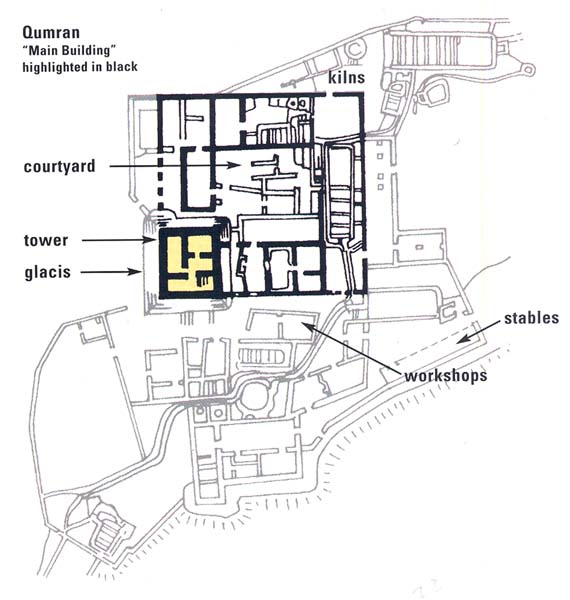Image Details

Qumran conforms to the model of other manor houses in Judea, according to Hirschfeld (see plans above). It is located at the junction of major ancient roads that connected Jericho in the north with Ein Gedi in the south and Jerusalem to the west—hardly the sort of remote place that world-denying hermits with “only palm-trees for company” (as Pliny puts it) would have sought out. The wealthy residents of this estate may have hired Essenes who lived in the surrounding region as agricultural laborers (and perhaps those Essenes hid scrolls—which Hirschfeld suggests were brought from Jerusalem before the Roman destruction—in nearby caves) but, Hirschfeld maintains, the residents weren’t themselves Essenes.
